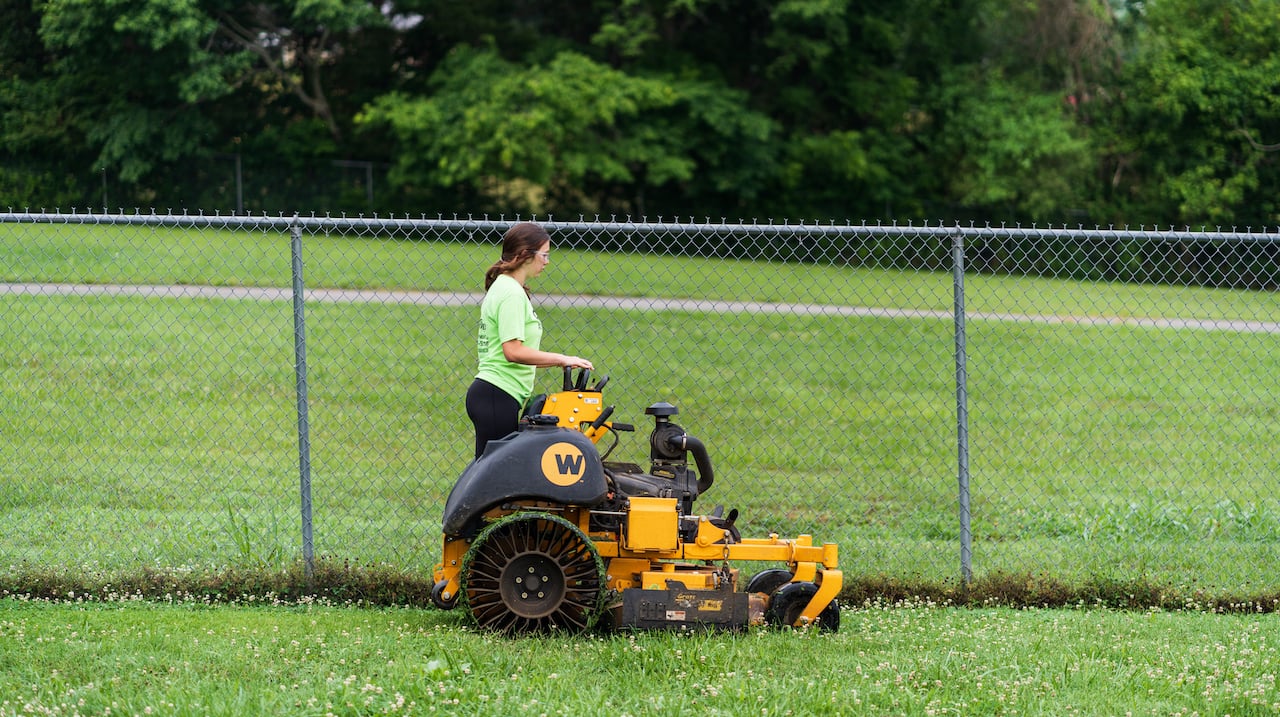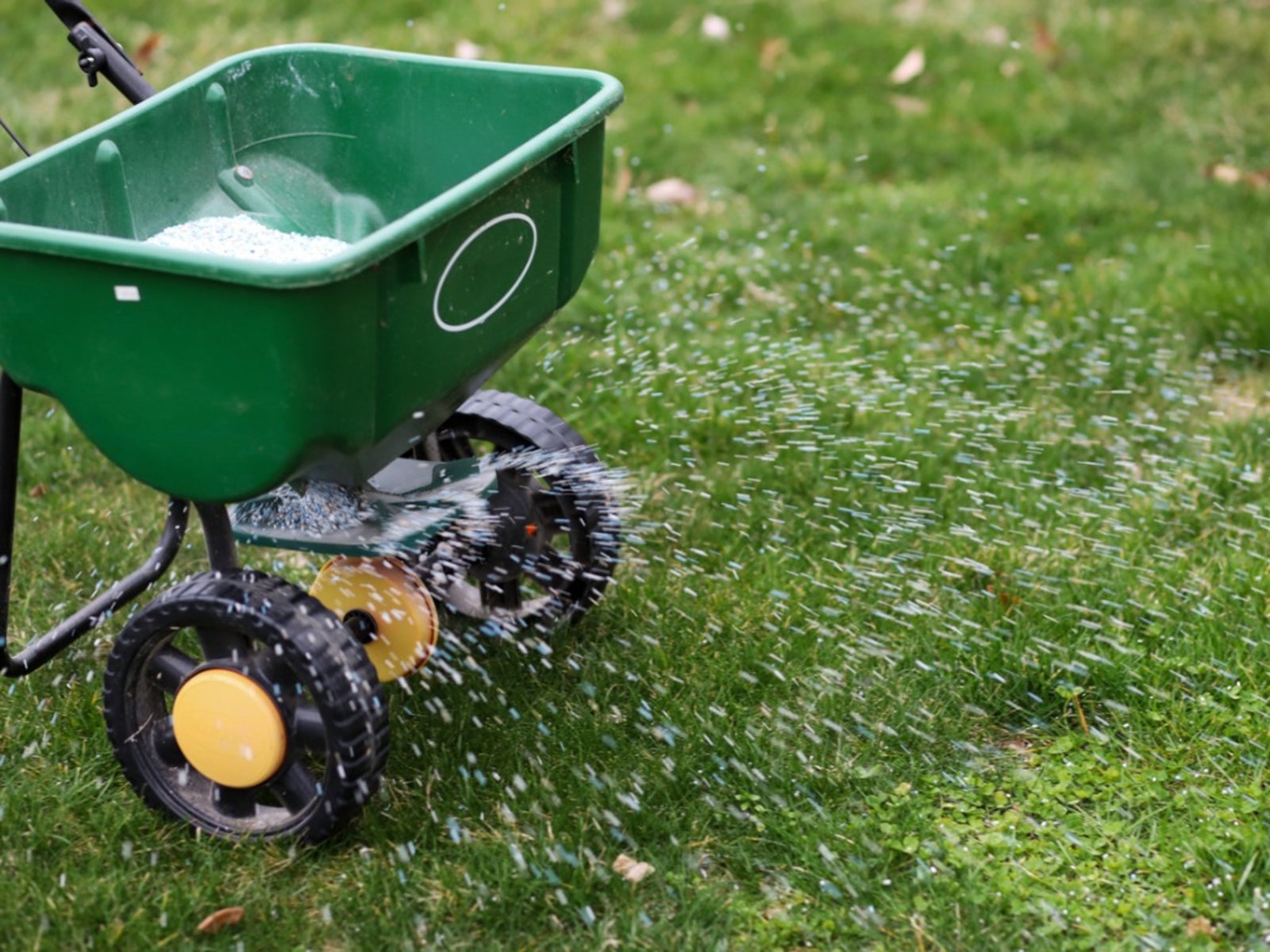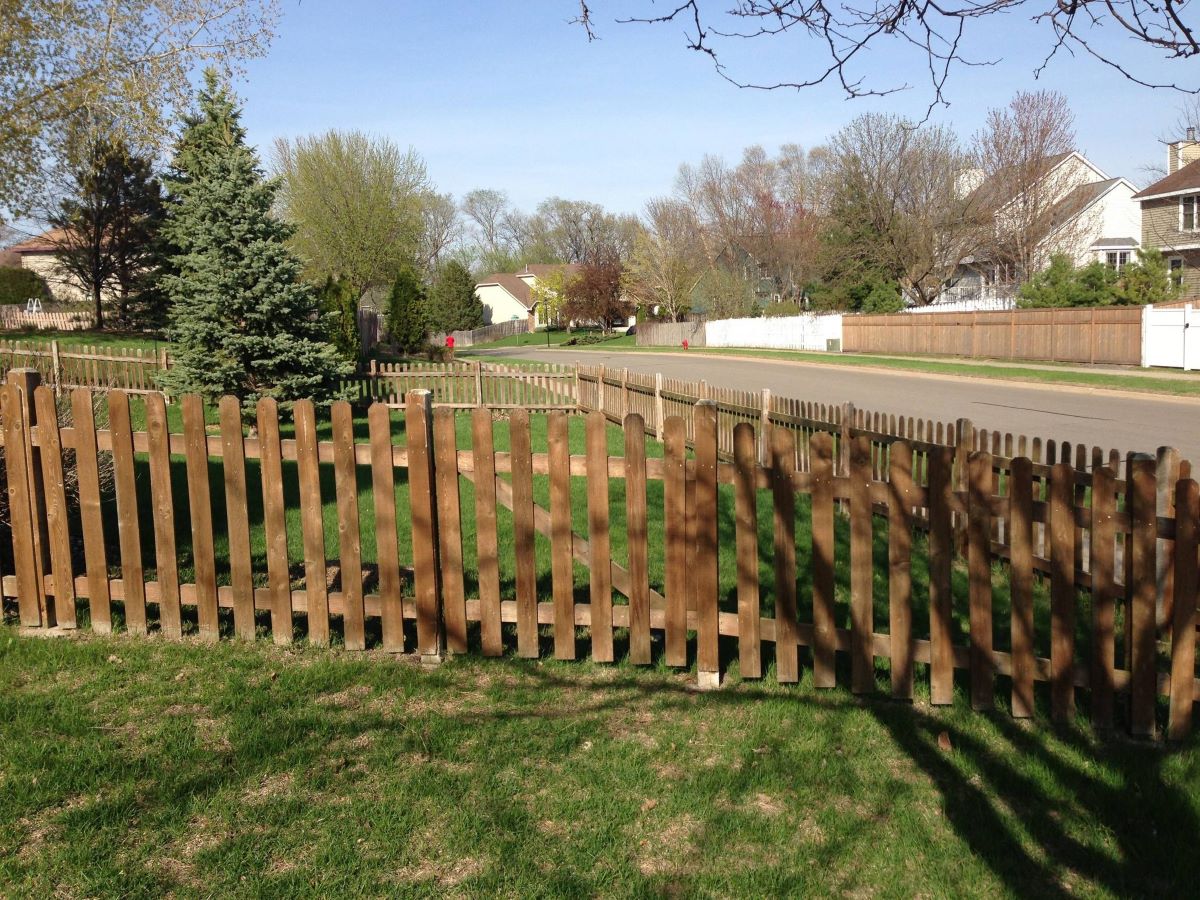Home>Garden Essentials>How To Estimate Lawn Care Pricing


Garden Essentials
How To Estimate Lawn Care Pricing
Modified: September 1, 2024
Learn how to estimate garden lawn care pricing with our helpful guide. Get tips and techniques to determine the right cost for maintaining your beautiful garden.
(Many of the links in this article redirect to a specific reviewed product. Your purchase of these products through affiliate links helps to generate commission for Storables.com, at no extra cost. Learn more)
Introduction
When it comes to maintaining a beautiful and lush garden, proper lawn care is essential. Whether you are a professional landscaper or a homeowner looking to tackle your own lawn maintenance, understanding how to estimate lawn care pricing is crucial. Pricing your services accurately ensures that you are adequately compensated for your time and resources, while still remaining competitive in the market.
Estimating lawn care pricing involves considering various factors, such as labor costs, material expenses, additional expenses, and desired profit margins. By carefully analyzing these elements and implementing effective pricing strategies, you can confidently offer your services and attract customers.
In this article, we will explore the key factors to consider when estimating lawn care pricing, how to calculate labor and material costs, and strategies for setting competitive prices. Let’s dive in!
Key Takeaways:
- Properly estimating lawn care pricing involves considering factors like lawn size, condition, and equipment costs. Balancing profit margin and competitive pricing is crucial for a successful lawn care business.
- Offering special services can expand your lawn care business, but it’s important to factor in additional expenses and market rates when determining pricing. Communicating the value of these services to customers is key.
Read more: How To Price A Landscaping Estimate
Factors to Consider
Before you can accurately estimate lawn care pricing, it’s essential to consider a few key factors that can influence the cost of your services. These factors include:
- Lawn Size: The size of the lawn is a major determinant of the pricing. Larger lawns require more time, effort, and resources to maintain, which should be reflected in the pricing.
- Lawn Condition: The state of the lawn plays a significant role in pricing. Lawns that are overgrown, densely weeded, or have significant damage may require additional labor and special treatments, leading to higher pricing.
- Accessibility: Consider how easily accessible the lawn is. If the lawn has obstacles such as intricate landscaping or difficult terrain, it may require more time and effort to complete the job, thus impacting the pricing.
- Frequency of Service: The frequency at which the lawn needs to be maintained also affects pricing. Regular maintenance may require less time and effort compared to a one-time cleanup or a neglected lawn, which may result in different pricing structures.
- Equipment and Supplies: Take into account the cost of your equipment, tools, and supplies used for lawn care. This includes lawn mowers, trimmers, fertilizers, pesticides, and other necessary items. These expenses should be factored into your pricing to ensure a profitable operation.
- Competition: Analyze the local market and the pricing strategies of your competitors. While you don’t want to undervalue your services, it’s important to remain competitive to attract customers.
Considering these factors will allow you to determine a fair and competitive pricing structure for your lawn care services. By taking into account the unique aspects of each job, you can tailor your pricing to reflect the specific needs and requirements of your clients.
Calculating Labor Costs
One of the most important aspects of estimating lawn care pricing is calculating labor costs. To accurately determine the labor expenses, consider the following steps:
- Time Estimation: Start by estimating the amount of time it will take to complete the job. Consider factors such as the size and condition of the lawn, the required tasks (mowing, trimming, weeding, etc.), and any additional services requested by the client.
- Hourly Wage: Determine the hourly wage for your labor. This should take into account your skill level, experience, and overhead costs associated with running your lawn care business. It’s important to ensure that your hourly rate not only covers your expenses but also allows for a reasonable profit margin.
- Crew Size: Assess whether you will be working alone or with a crew. If you have employees or subcontractors assisting you, consider their hourly rates as well. Adjust the labor cost calculation accordingly by factoring in the number of workers involved.
- Overtime and Travel Time: Take into account any additional time that may be required due to overtime or travel. If the job site is far from your base of operations, factor in travel time and mileage expenses. If the work extends beyond regular working hours, consider the overtime rates as well.
- Task Complexity: Certain tasks may require more skill or effort than others. For example, tackling heavy overgrowth or removing stubborn weeds may necessitate extra time and effort. Adjust the labor cost accordingly to reflect the complexity of the task at hand.
By considering these factors and accurately calculating labor costs, you can ensure that you are compensated fairly for your time and expertise. It also helps you provide transparency to your clients and build trust by clearly outlining the labor portion of your lawn care pricing.
Determining Material Costs
In addition to labor costs, accurately determining material costs is crucial when estimating lawn care pricing. The materials you may need can vary depending on the specific services you offer and the needs of each job. Here’s how to determine material costs:
- Lawn Products: Identify the lawn products you will need for the job, such as fertilizers, herbicides, pesticides, soil amendments, and grass seed. Calculate the quantity required based on the size and condition of the lawn. Consider the cost per unit for each product.
- Equipment and Tools: Determine if there are any specific equipment or tools needed for the job that you don’t already own. For example, if the client requires aerating the lawn and you don’t have an aerator, you may need to rent or purchase one. Factor in the cost of renting or buying equipment.
- Maintenance Supplies: Take into account the general maintenance supplies you regularly use for lawn care, such as fuel for your equipment, lubricants, replacement parts, safety gear, and cleaning supplies. These ongoing expenses should be allocated into the material costs for accurate pricing.
- Supplier Prices: Research and compare prices from different suppliers for the materials you need. Look for bulk discounts or special offers that can help you save on costs without compromising on quality. It’s important to source materials from reliable suppliers to ensure the best results for your clients.
- Markup: Consider adding a markup to the material costs. This helps cover your time and effort spent on sourcing and purchasing materials and adds a reasonable profit margin to your pricing. The markup percentage may vary depending on your business model and overhead expenses.
By accurately determining material costs, you can account for these expenses in your lawn care pricing. It ensures that you are adequately compensated for the resources you use and helps you maintain a profitable operation. Providing transparency and clarity regarding material costs to your clients also helps build trust and credibility in your services.
Additional Expenses
When estimating lawn care pricing, it’s important to consider additional expenses that may arise during the course of a job. These expenses go beyond labor and material costs and can impact your overall pricing. Here are some common additional expenses to keep in mind:
- Transportation Costs: If your lawn care business requires traveling to different job sites, factor in transportation costs such as fuel, vehicle maintenance, and insurance.
- Licensing and Insurance: Ensure that you have the necessary licenses and insurance required to operate a lawn care business. Include the cost of obtaining and maintaining these licenses and insurance policies in your pricing.
- Equipment Maintenance and Repairs: Lawn care equipment requires regular maintenance and occasional repairs. Account for these costs in your pricing to ensure that you can cover the expenses associated with keeping your equipment in good working condition.
- Marketing and Advertising: Promoting your lawn care services may involve costs such as creating a website, printing flyers, running online ads, or listing your business in local directories. Allocate a portion of your pricing to cover marketing expenses and attract potential customers.
- Amenities and Add-ons: Additional services or amenities offered, such as mulching, tree trimming, or irrigation system maintenance, may require specialized tools or materials. Include the cost of these add-ons in your pricing structure.
- Taxes and Business Expenses: Remember to account for taxes, accounting fees, business insurance, and administration costs in your pricing to ensure that your business remains profitable and sustainable.
By factoring in these additional expenses, you can ensure that your pricing covers all the necessary costs associated with running a lawn care business. It helps you maintain a healthy profit margin and ensures that you can maintain the quality of your services over time.
Read more: How To Price Lawn Care Jobs
Profit Margin Calculation
Calculating your profit margin is an essential step in estimating lawn care pricing. It allows you to determine the percentage of profit you want to earn on each job. To calculate your profit margin, follow these steps:
- Total Cost Calculation: Add up all the expenses we’ve discussed so far, including labor costs, material costs, and additional expenses.
- Desired Profit Margin: Determine the percentage of profit you want to earn on each job. This can depend on various factors such as your business goals, the local market, and the level of competition. A commonly used profit margin range for lawn care businesses is between 10% and 20%.
- Calculate the Profit Amount: Multiply the total cost by the desired profit margin percentage to determine the profit amount. For example, if the total cost is $500 and you want a 15% profit margin, the profit amount would be $500 x 0.15 = $75.
- Final Pricing: Add the profit amount to the total cost to get the final pricing. Using the previous example, the final pricing would be $500 + $75 = $575. This is the amount you would charge the client for the job.
Calculating your profit margin ensures that you are not only covering your expenses but also earning a reasonable profit for the services you provide. It allows you to build a sustainable business and invest in the growth and development of your lawn care venture.
Keep in mind that profit margins should be balanced. While it’s important to aim for profitability, pricing your services too high may result in losing potential customers. On the other hand, pricing too low can be detrimental to your business’s long-term success. It’s crucial to find the right balance between profitability and maintaining competitive pricing in your market.
When estimating lawn care pricing, consider factors such as the size of the lawn, the services needed (mowing, fertilizing, etc.), and the local market rates. It’s also important to account for any additional costs, such as equipment maintenance or travel expenses.
Pricing Strategies
When it comes to lawn care pricing, employing effective strategies can help you attract customers while maintaining profitability. Here are some pricing strategies to consider:
- Competitive Pricing: Research the pricing strategies of your competitors to ensure that your rates are in line with the industry standards. Consider offering competitive pricing to attract customers without undervaluing your services.
- Bundle Services: Bundle multiple services together and offer them at a discounted package price. This not only encourages customers to opt for more comprehensive lawn care solutions but also increases the average value per job.
- Seasonal Pricing: Adjust your pricing based on the seasonality of lawn care demands. For example, you can offer lower pricing during the off-peak season to attract customers and keep your schedule filled. During peak seasons when demand is high, you can increase your rates to reflect the increased workload.
- Referral Incentives: Encourage customers to refer your services to their friends and family by offering referral incentives. This can be a discount on their next service or a cash reward for every successful referral. Word-of-mouth recommendations can be a powerful marketing tool for your lawn care business.
- Loyalty Programs: Implement a loyalty program where customers earn points or discounts for repeated business. This encourages customer loyalty and incentivizes them to choose your services over your competitors.
- Add-On Services: Offer additional services that complement your lawn care offerings at an additional cost. This allows customers to customize their packages based on their needs and preferences, increasing your revenue potential.
Implementing these pricing strategies can help you attract and retain customers while maximizing your profitability. It’s important to regularly evaluate and adjust your pricing strategy based on market trends, customer feedback, and the overall performance of your lawn care business. Finding the right pricing strategy can set you apart from your competition and establish a strong customer base.
Competitive Analysis
Conducting a competitive analysis is crucial to understanding the market landscape and positioning your lawn care business effectively. By evaluating your competitors, you can gain insights into their pricing strategies, services offered, and customer satisfaction levels. Here’s how to conduct a competitive analysis:
- Identify Competitors: Start by identifying your direct competitors in the local area. These may include other lawn care companies, landscaping firms, or even individual contractors offering similar services.
- Research Services Offered: Investigate the range of services offered by your competitors. Look for any unique offerings or specialized services that set them apart.
- Analyze Pricing: Examine the pricing structure of your competitors. Compare their rates for different services and evaluate how your pricing compares. This analysis will help you determine whether you need to adjust your prices to remain competitive.
- Customer Reviews and Feedback: Read customer reviews and testimonials about your competitors. Pay attention to both positive and negative feedback to understand what customers appreciate and where there may be room for improvement.
- Quality of Service: Consider the quality of service provided by your competitors. Assess the professionalism, reliability, and attention to detail demonstrated in their work. Identify areas where you can differentiate yourself and provide better service.
- Identify Market Gaps: Look for any gaps or untapped opportunities in the market that your competitors may have overlooked. This could be a specific service that is in high demand or a particular niche that is not being targeted effectively by others.
- Unique Selling Proposition (USP): Based on your competitive analysis, determine your unique selling proposition. This is what sets your lawn care business apart and gives you a competitive edge. It could be superior customer service, specialized expertise, or innovative techniques.
By conducting a thorough competitive analysis, you can gain valuable insights into the market dynamics and make informed decisions about your pricing strategy. This knowledge allows you to position your lawn care business effectively, differentiate yourself from competitors, and attract the right target audience.
Remember that the goal is not to copy your competitors but to understand the market better and find your own unique selling points. Providing excellent service, delivering value, and maintaining competitive pricing will help you establish a strong foothold in the lawn care industry.
Adjustments for Seasonal Variations
Seasonal variations in the lawn care industry can have a significant impact on your pricing strategy. Understanding these fluctuations and making appropriate adjustments will help you maintain profitability throughout the year. Here are some considerations for seasonal variations:
- Peak Season Pricing: During peak seasons, such as spring and summer when lawn care demands are high, you can adjust your pricing to reflect the increased workload. This can help you maximize your earnings during the busiest times of the year.
- Off-Peak Season Pricing: In the off-peak seasons, when lawn care demands are lower, you can consider offering discounted rates or promotional packages to attract customers. This allows you to fill your schedule and generate revenue during periods when business may be slower.
- Weather-Dependent Adjustments: Weather conditions can affect the type and amount of work required for lawn care. Extreme heat, drought, heavy rainfall, or cold temperatures can impact your operational efficiency and costs. Adjust your pricing to incorporate any additional time or resources needed to tackle weather-related challenges.
- Special Services for Different Seasons: Take advantage of the specific services needed in different seasons. For example, in the fall, offer leaf removal and gutter cleaning services, while in the winter, provide snow removal and de-icing services. Pricing these seasonal services separately can help you optimize your revenue potential.
- Pre-Booking Discounts: Encourage customers to pre-book their lawn care services for the upcoming season by offering discounts or incentives. This not only helps you secure business in advance but also aids in cash flow management and planning for the busy season.
- Budget-Friendly Maintenance Plans: Offer budget-friendly maintenance plans that allow customers to pay a fixed monthly fee for year-round lawn care services. This provides them with predictable pricing and helps you ensure a consistent revenue stream throughout the year.
By adjusting your pricing to align with seasonal variations, you can adapt to the changing demands of the lawn care industry. This not only helps you optimize your revenue but also ensures that you are providing appropriate pricing for the level of effort and resources required during different times of the year.
Remember to communicate these seasonal adjustments clearly to your customers, highlighting the value and benefits they will receive based on the specific services and conditions associated with each season.
Special Services Pricing
In addition to regular lawn care services, offering special services can be a lucrative opportunity to expand your business and cater to specific customer needs. These special services often require additional expertise, equipment, and resources, which should be reflected in the pricing. Here’s how to approach special services pricing:
- Evaluate Service Complexity: Assess the complexity and level of expertise required for the special service. Determine if it involves specialized skills, certifications, or equipment that differentiate it from your regular lawn care offerings.
- Research Market Rates: Research the market rates for similar special services in your area. Compare pricing among competitors to get an idea of the average cost and use it as a starting point for your pricing structure.
- Factor in Additional Expenses: Consider any additional expenses associated with the special service, such as specialized tools, materials, or licensing fees. Ensure that these costs are accounted for in your pricing to maintain profitability.
- Calculate Time and Labor: Estimate the extra time and labor required to provide the special service. Take into account the complexity, scope, and any unique challenges associated with it. This will help you determine a fair and accurate pricing structure.
- Offer Different Pricing Options: Consider offering different pricing options for special services based on factors such as service levels, package deals, or customizations. This provides flexibility for customers and allows them to choose the option that best fits their needs and budgets.
- Upsell and Cross-Sell: Take advantage of special services to upsell or cross-sell your other lawn care offerings. For example, if you offer tree trimming as a special service, you can suggest complementary services such as mulching or fertilization to enhance the overall look of the landscape.
Special services pricing should be based on the value provided, the expertise required, and the market rates. It is important to communicate the benefits and value of these services to customers, making it clear why they should choose your specialized services over generic alternatives.
Remember to regularly review and adjust your special services pricing as market conditions and competitive factors may influence the optimal pricing structure. By striking the right balance between affordability and profitability, you can effectively offer special services that expand your business and cater to the specific needs of your customers.
Conclusion
Estimating lawn care pricing is a critical aspect of running a successful lawn care business. By taking into account factors such as labor costs, material expenses, additional expenses, and desired profit margins, you can confidently set your prices and attract customers while maintaining profitability.
Calculating labor costs involves determining the time required for each job, setting an appropriate hourly wage, considering crew size, and accounting for complexities and task variations. Determining material costs involves analyzing the required lawn products, equipment and tools, maintenance supplies, supplier prices, and applying an appropriate markup.
Additional expenses, such as transportation costs, licensing and insurance, equipment maintenance, marketing expenses, and taxes, should also be factored into your pricing. These expenses ensure that your business runs smoothly and efficiently.
Calculating profit margin is essential to determine the percentage of profit you want to earn on each job. By balancing your desired profit margin with competitive pricing, you can maintain a healthy profit while remaining attractive to customers.
Pricing strategies, such as competitive pricing, bundle services, seasonal adjustments, and referral incentives, can help you stand out from the competition and attract customers. Conducting a competitive analysis allows you to gain insights into the market landscape and identify opportunities for differentiation.
Seasonal variations require adjustments in pricing to accommodate peak and off-peak seasons, weather-dependent challenges, and specific services for each season. Special services pricing should consider service complexity, market rates, additional expenses, time and labor, and offer different pricing options.
In conclusion, estimating lawn care pricing requires a comprehensive understanding of various factors, market dynamics, and customer expectations. By carefully considering these factors and implementing effective pricing strategies, you can confidently set your prices, attract customers, and build a successful and profitable lawn care business.
Frequently Asked Questions about How To Estimate Lawn Care Pricing
Was this page helpful?
At Storables.com, we guarantee accurate and reliable information. Our content, validated by Expert Board Contributors, is crafted following stringent Editorial Policies. We're committed to providing you with well-researched, expert-backed insights for all your informational needs.














0 thoughts on “How To Estimate Lawn Care Pricing”